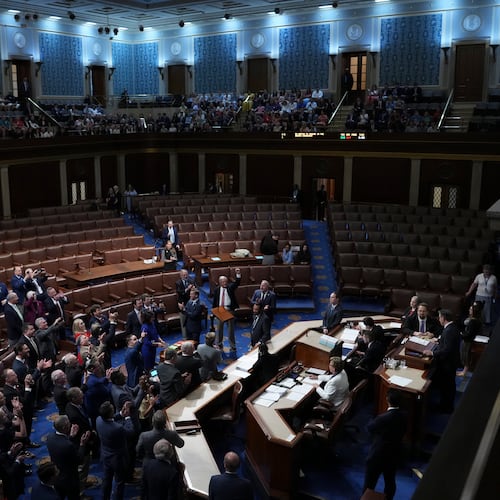All roads are toll roads. Somebody paid, or is paying, for every road ever built. The Santa Fe Trail might have been an exception. Nobody paid money to build it. Nobody paid to maintain it, as evidenced by the 3-foot-deep wheel ruts. Nobody paid to rebuild it when it was worn out.
Most traditional toll roads charge by the vehicle or mile. The so called “free” roads usually charge by the gallon of fuel purchased, or property tax or sales tax. “Free” road managerial agencies have hidden their toll booths off site, convincing many drivers the road they’re driving is free. But the “not-so-free” interstate has cost drivers nearly half a trillion fuel-tax dollars to build, not counting maintenance, and it will cost even more to rebuild.
The fuel tax was once a fair way to pay for roads, when most cars by today’s standards were clunkers and got about 7 mpg. The government has mandated by 2025 that new cars must get 54.5 mpg. Wealthier owners of newer cars will be able to travel seven times as far on our nation’s roads on a gallon of fuel as a poor person who can only afford a clunker.
Charging for roads by the gallon of fuel purchased is more problematic as electric vehicles hit the road. All-electric cars don’t burn fuel and their owners ride the nation’s highways for free. How fair is that? Pretty soon, the fuel tax dog is not going to hunt.
The business model for paying for the “free” interstate is also flawed. Most of the 47,000 interstate miles have been built and now we are in either the maintenance or reconstruction phase. State DOTs generally take care of maintenance. The Federal Highway Administration generally helps out financially with reconstruction. This model tends to encourage a state to defer maintenance until Federal funds are available for reconstruction. What is the point of spending state maintenance funds if FHWA is willing to help pay for demolishing and replacing the pavement or bridges in what should only be a mid-life crisis?
As long as FHWA is willing to pay a sizeable chunk of reconstruction costs, it is to the state’s advantage to minimize maintenance over the first 40 years and then receive federal payments to rebuild the pavement and start over. When state maintenance is minimized, federal reconstruction expenses are usually maximized. Unfortunately, fuel taxpayers pay for both.
Fuel taxes collected in any state should stay home, not sent through Washington. Most states send a significant amount of fuel tax money to Washington that never comes back. When it does return, there are a lot of strings attached.
It would be better if the bulk of the 18.4 cents federal tax went directly to the state DOT with appropriate percentages designated for the existing interstate and the rest for other roads within the state. It would be easier for taxpayers to “follow the money.” If a state built a bridge to nowhere, the other 49 would not be complicit in the folly or waste.
Congress should relieve the FHWA of any responsibility for the interstate. States would then have to make a conscious decision whether to use the combined federal and state money for maintenance or reconstruction with no future bailout coming from Washington. That is how a traditional toll project operates. They generally have a single revenue source and must determine when to maintain and when to rebuild. If they need additional funds they go to Wall Street, not Washington.
Rod Fogo worked as a highway manager and engineer for more than 40 years. He lives in Dunwoody.
About the Author
Keep Reading
The Latest
Featured


